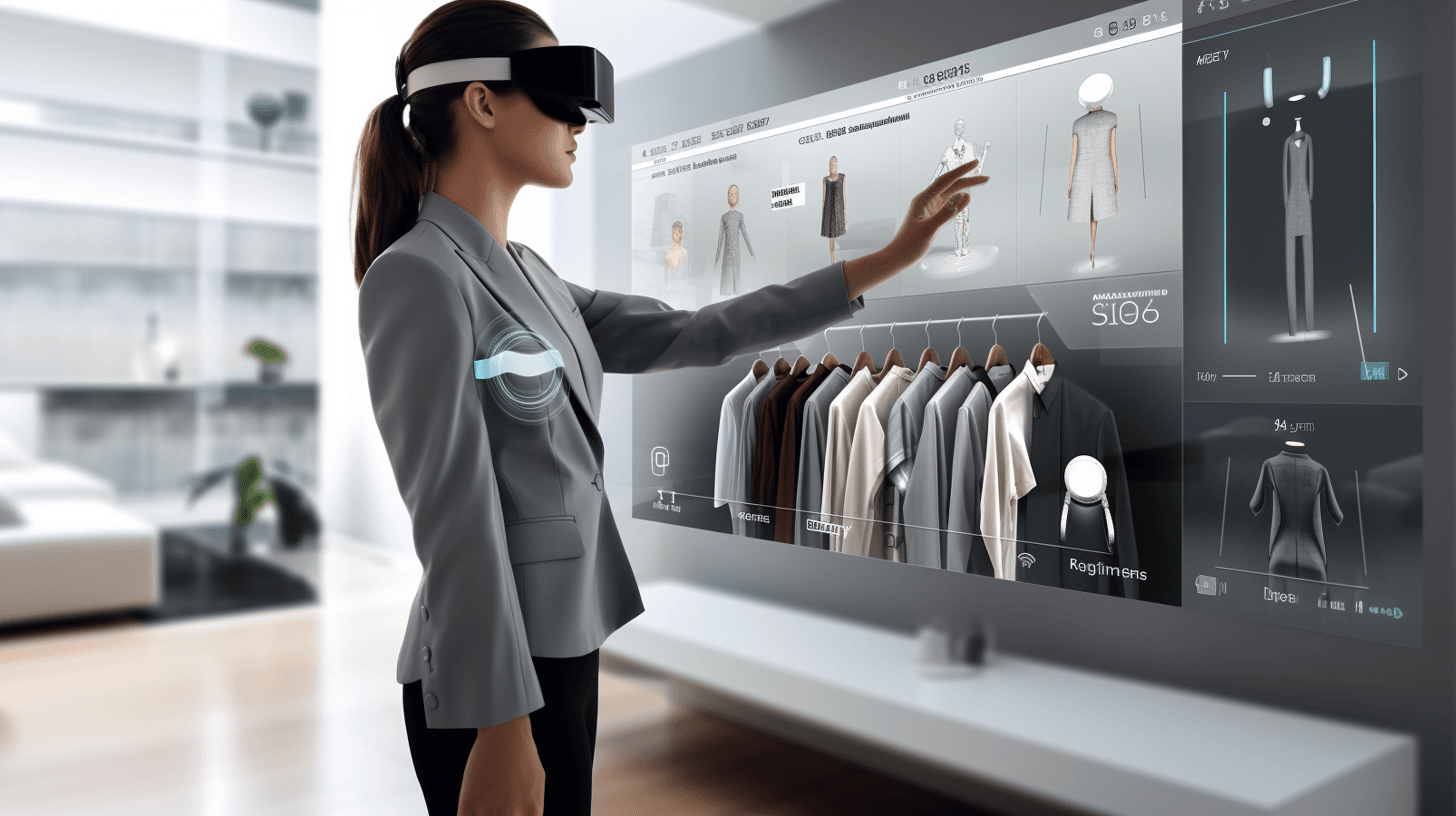
CSPs - How Content Service Providers Make Your Product Data Shine
We all love e-commerce. But while shoppers shop, they rarely think about the machinery keeping the website alive. Consider Product Information Management (PIM) systems. They hide in the shadows, and most "normal" people have never heard of them. Shoppers with insight might consider them mere databases, but PIMs are so much more than that. They are the one source of truth for a brand's products.
Yet, there is more. It's time to learn about a concept even fewer have heard of: Content Service Providers (CSPs). They ensure that the data within a PIM is displayed attractively and effectively across various online platforms.
This article examines how PIMs and CSPs work together to improve a brand's online product pages. For businesses, this is more than technical jargon. It's about turning good quality and skill into something attractive while staying authentic.
Target Readership
This article gives a short and easy guide to getting more online attention and customer interaction using CSPs. Whether you're a beginner or looking to refine your approach, find actionable insights for e-commerce success here.
PIM & CSPs are Best Together
PIM (Product Information Management)
A PIM system is a unified hub for all product data, from basics like names and descriptions to advanced details like design specs and multimedia. It becomes more complex as sales channels diversify from online stores to mobile apps and even augmented reality. PIMs help ensure the information is accurate and high-quality across all these platforms. It's your one source of truth for everything digital!
CSP (Content Service Provider)
CSPs act as data stylists, tailoring product information to fit different e-commerce platforms. Think of your product as art: While PIMs create the masterpiece, CSPs choose the right frame for each gallery. They enhance data with rich media and attention-grabbing elements.
PIM/CSP Interaction
Combine PIM and CSPs, and you get a data flow that's adaptable yet coherent across various sales channels. Imagine PIM as the brain and CSPs as the voice—working together, they articulate your brand's message effectively. This partnership solves common challenges:
- Consistency: PIMs and CSPs ensure product information stays the same across different platforms, which helps preserve brand integrity.
- Real-time Updates: CSPs enable instant updates from PIMs across all channels, keeping customers in the loop.
- Enhanced Engagement: CSPs do more than just list products. They add interactive features to make the product information more interesting, which helps increase customer interest and sales.
- Scalability: The collaboration allows for growth, making adding new products and channels easy without stressing your infrastructure.
The need for both
The ultimate goal isn't merely to showcase products online; it's to captivate and persuade your target audience. Successful brands view each product as a chapter in a larger narrative. This goes beyond just listing product details. It's about linking features to their advantages and showing what the brand stands for. The goal is to encourage customers to interact and make a purchase.
Understanding your audience is the starting point. What motivates them? What are their pain points? You can use PIMs to organize and segment your data with these insights. Meanwhile, CSPs make the data more engaging. They create content that appeals to specific groups of consumers. The content is designed to get specific reactions, like signing up for a newsletter, sharing on social media, or making a purchase.
But storytelling is not a one-and-done effort. It's a dynamic, ongoing process that requires constant refinement. Data analytics, another expertise area of CSPs, helps in this continuous improvement. Brands can monitor how consumers interact with their site, how long they stay, and how often they buy something. This information helps them improve their online story. The main goal is to build long-term relationships with customers beyond just selling them something, encouraging loyalty and support for the brand.

Additional advantages of CSPs
CSPs help turn raw data from PIM systems into a format that works for each platform. They keep the information consistent and handle the tricky parts of dealing with many platforms. This lets businesses concentrate on what they do best.
CSPs do more than show product details. They make the customer experience better by adding videos and pictures. They also use advanced data analysis and AI to change product listings based on what customers like, which helps increase interest and sales.
As a business gets bigger, managing all its data becomes more complicated. CSPs provide solutions that can easily adjust to add new products or places to sell them. They help brands be ready for both the present market and future changes.
In summary, CSPs do more than improve your online store's operations. They make online shopping more engaging, efficient, and flexible. They play a crucial role for brands that want to succeed in a constantly changing online world.

CSPs - More than Content
CSPs employ cutting-edge search optimization techniques and rich, strategically placed content to elevate a brand's visibility. Not only does this improve search rankings, but it also fosters organic reach, ensuring your brand is seen by the right eyes at the right time.
While content might be king, engagement is the crown jewel. CSPs craft product listings that go beyond mere information. Incorporating features like augmented reality, interactive demos, and 360-degree views, they create experiences that capture consumer attention. The result is a decline in bounce rates and an increase in conversion chances.
But data isn't just numbers; it's a treasure trove of insights when interpreted correctly. CSPs excel at data analytics, collecting myriad interaction points to derive actionable intelligence. From identifying trends to diagnosing customer pain points, these insights empower businesses to make informed decisions, aligning their strategies for maximum impact.
Maintaining consistent product information across multiple platforms is no small feat. With centralized management systems, CSPs automate and synchronize updates, effortlessly maintaining data integrity. The outcome is a smoother operational workflow, cost savings, and a faster go-to-market.
As businesses set their sights on global markets, the localization challenge looms large. From translating content to cultural adaptation, CSPs simplify these complexities. Their extensive content distribution networks enable businesses to penetrate new markets with minimal adjustments to their existing content strategy.
CSPs We Love
Finding capable CSPs, many times blurring the line between PIM, CSP, and Content Syndication Platform, is not easy, but we've collected some popular alternatives below.
Take Icecat, for instance. It's a product catalog and a global syndication platform featuring a diverse range of products, from beauty items to electronics. But it also acts as an excellent CSP, providing Product Stories ready for use on any e-commerce.
Next, we have Etilize. It's part of the Spex family and takes product data to the next level by offering features like 360-degree product views and interactive videos.
Flixmedia comes into play when customer engagement is a priority. They’re experts at creating interactive guided product tours and compelling video content. But their offerings don’t stop at surface-level engagement; they delve into analytics to help businesses understand their content's impact.
Meanwhile, 1WorldSync is a comprehensive powerhouse. It offers seamless integration across different systems and an unwavering focus on data accuracy. It's your go-to for all-in-one product content management and distribution solutions.
When choosing a CSP, remember it's more than just a business transaction. It's a strategic alignment that can amplify your brand's digital presence in ways you may not have imagined. Looking beyond features to consider a CSP's ethos, scope, and adaptability can make all the difference in leveraging the full potential of your digital footprint.
Top CSPs
Choosing your CSP(s)
Choosing Content Service Providers (CSPs) can feel like venturing into uncharted territory, especially for newcomers in manufacturing and distribution. But with some know-how, you can pinpoint the perfect CSP that meets your current needs and is adaptable to future changes.
Goals and Comprehensive Services
Start by identifying your specific business objectives. Whether you aim to break into new markets, revamp content, or add Augmented Reality features, your goals will guide your CSP selection. Once you're clear on what you need, look for CSPs that offer more than just the basics. The right provider will have advanced capabilities like analytics, AI-driven personalization, and multi-lingual support.
Integration and Scalability
If you're already using other digital tools, the ability to integrate smoothly with existing platforms is a must. But it's not just about today - your chosen CSP should be capable of growing with your business. That means offering scalability and flexibility in their service, so you're not locked into a setup that may not suit you down the line.
Budget and Future-Readiness
Finally, pay close attention to the financial aspect. Transparency in pricing is essential, as are clear contractual terms. Also, go for a CSP with a forward-thinking approach - someone who's already eyeing the next wave of technologies like Virtual Reality and voice-activated content.
Choosing the suitable CSP is more than ticking off a checklist in wrapping up. It's about research, alignment with your long-term goals, and a willingness to adapt as your business evolves.
How CSPs Boost SEO
Great content is essential, but people need to be able to find it. That's where Content Service Providers (CSPs) come in. They use SEO, or search engine optimization, to help more people find your content online.
The main part of SEO is the content itself. CSPs are experts at adding the right keywords to your product information. This makes it easier for people and search engines to find. Besides what you can see, they also work on hidden things like metadata, including titles and descriptions, to get more clicks from search results.
CSPs ensure your website looks good on any screen size, which is important for a good user experience. Search engines like Google give higher rankings to sites that work well on mobile, so this helps you stand out.
CSPs use structured data, or Schema Markup, to help search engines better understand your content. This can even lead to special displays, called rich snippets, in search results. They also keep your information up-to-date, which search engines like.
In short, SEO might seem complicated, especially if you're new to it. But with the right CSP, it becomes a vital part of your content strategy. When SEO is part of creating and sharing content, your products don't just get noticed — they become hard to ignore.
The Trends in CSPs
Artificial Intelligence (AI) and Machine Learning are becoming essential in the Content Service Provider (CSP) industry. These technologies help create personalized product descriptions. They also use predictive analytics to understand what customers want. This makes it easier for businesses to target their audience effectively.
Virtual and Augmented Reality are changing the online shopping experience to make it more interactive. The Internet of Things (IoT) adds another layer to this. For example, CSPs can use it to offer virtual "try before you buy" experiences. Smart fridges might even suggest what groceries to buy.
Voice-activated devices like smart speakers are becoming more popular. Because of this, CSPs are starting to write in a more natural and conversational tone. As online shopping becomes global, there's a need for content in multiple languages. The content should also fit local cultures to be more accessible.
Customers are showing more interest in ethical and sustainable business practices. This is making CSPs think more about responsible content creation. They also include community-made content, such as customer reviews or photos. This gives a more complete and authentic view of products.
Ready to Try Using a CSP?
CSPs do more than just provide content. They create meaningful experiences that connect with consumers and fit the brand's values. These experiences are also easy to find through search engines. CSPs also stay updated on new technologies like AI and interactive media. They use real-time feedback to make the customer experience even better.
If you make or sell products, now is a good time to think about working with a CSP. They can help you keep up with new trends and make interesting content. This can help your products stand out and get noticed in a busy market.

Ask us any question
We will respond within 8 hours and guide you in the right direction.
Your data is safe with us. We will not share your email with anyone, and we will use it only to contact you regarding your inquiry.
